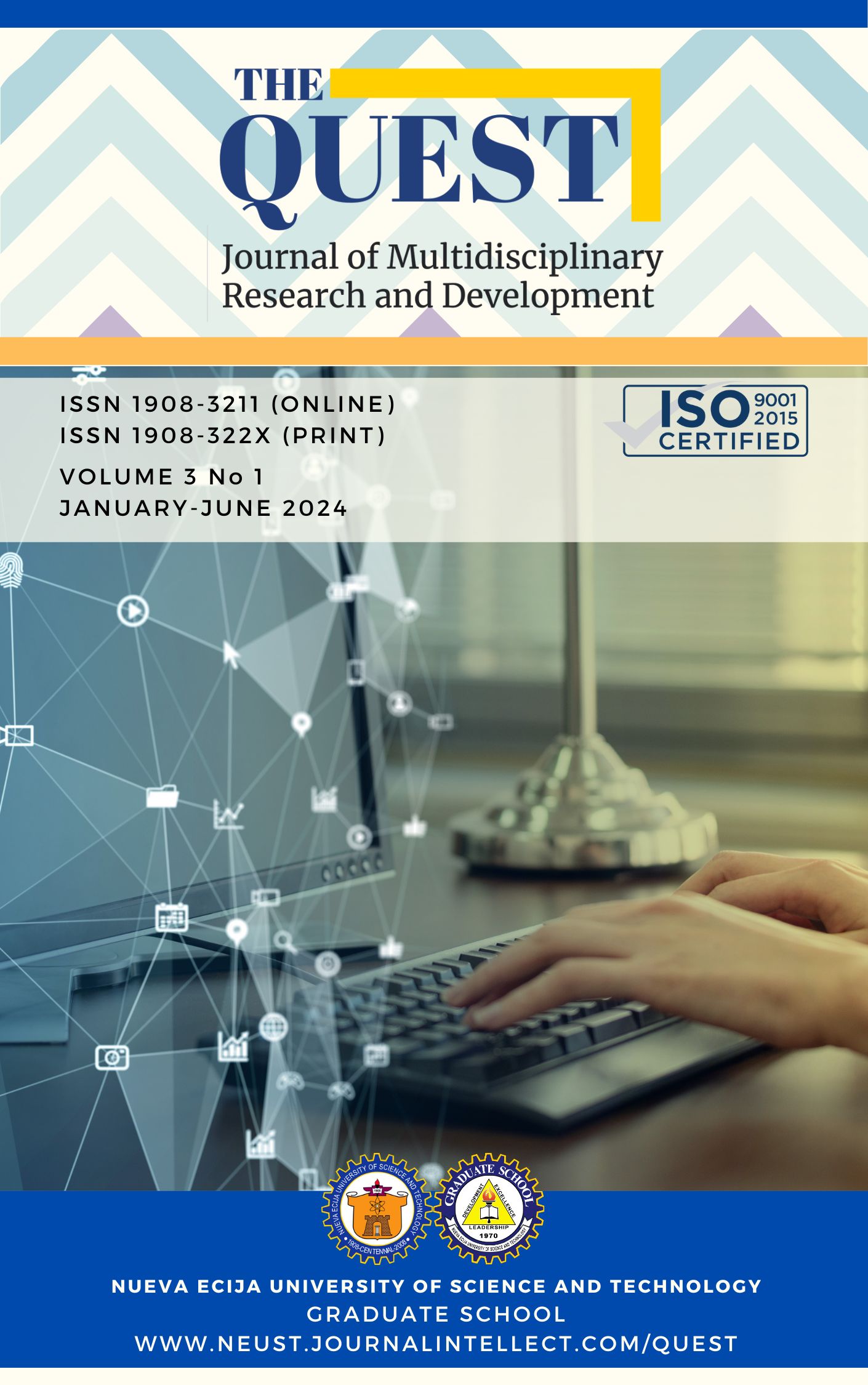Marketing Integration Strategies in Enterprise Merger: Basis for Strategic Plan

Published 06/30/2024
Keywords
- Enterprise merger; Marketing concepts; Marketing integration; Marketing strategies;Team collaboration
How to Cite
Copyright (c) 2024 The QUEST: Journal of Multidisciplinary Research and Development

This work is licensed under a Creative Commons Attribution-NonCommercial 4.0 International License.
Abstract
This study explored the dynamics of companies involved in mergers and acquisitions, shedding light on their operational characteristics and post-merger marketing practices. It highlights the challenges faced, such as teamwork, cultural differences, and customer targeting, while emphasizing areas of success and opportunities for refinement. Respondents generally agree on marketing strategies, concepts, and collaboration principles, with recognition of the need for adaptation in the face of changing market conditions and the evolving role of social media. The challenges posed by intense competition, diverse customer preferences, ad blocking, and changing marketing effectiveness are discussed, underlining the importance of adaptability. Economic instability, the growing emphasis on social and environmental responsibility, and the need for strategic planning and consumer-centric approaches are key challenges in marketing concepts. In marketing team collaboration, overcoming obstacles related to unclear goals, interdepartmental cooperation, and cultural differences is crucial to fostering effective teamwork. The strategic plan proposed in response to these challenges emphasizes stakeholder collaboration, content quality, diversified market strategies, transparency, and cultural understanding. It aimed to enhance overall marketing effectiveness, benefiting cement companies engaged in merger initiatives. These recommendations encompass improved communication, cross-departmental cooperation, and training, forming a comprehensive approach to address and overcome the complexities of marketing integration in the context of enterprise mergers.
References
- References
- Barney, J. (1991). Firm resources and sustained competitive advantage. Journal of Management, 17(1), 99-120.
- Dawar, N., & Pillutla, M. M. (2000). Impact of product-harm crises on brand equity: The moderating role of consumer expectations. Journal of Marketing Research, 37(2), 215-226.
- Domingo, A. (2023). Economic appraisal and strategic analysis of the onion industry in the Philippines. International Journal of ADVANCED AND APPLIED SCIENCES, 10(8), 78–90. https://doi.org/10.21833/ijaas.2023.08.009
- Domingo, A. (2023). The plight of the onion industry in the onion capital of the Philippines: Basis for intervention strategies. Asian Journal of Agriculture and Rural Development, 13(1), 66–74. https://doi.org/10.55493/5005.v13i1.4766
- Domingo, A. (2023). Mung bean production as a source of livelihood among farmers in a municipality in the Philippines: Challenges and opportunities. Asian Journal of Agriculture and Rural Development, 13(2), 130–137. https://doi.org/10.55493/5005.v13i2.4779
- Hegazy, M., Hegazy, K., & Eldeeb, M. (2022). The balanced scorecard: Measures that drive performance evaluation in auditing firms. Journal of Accounting, Auditing & Finance, 37(4), 902-927.
- Karunambiga, K., Ali, S. I., LP, S., Esteban, A. P., Pascual, M., & Praveenadevi, D. (2023). Marketing Policy In Service Enterprises Using Deep Learning Model. International Journal of Intelligent Systems and Applications in Engineering, 12(7s), 239-243.
- Keller, K. L. (1993). Conceptualizing, measuring, and managing customer-based brand equity. Journal of Marketing, 57(1), 1-22.
- Rosenzweig, P. M. (1993). Managing acquisitions: Creating value through corporate renewal.
